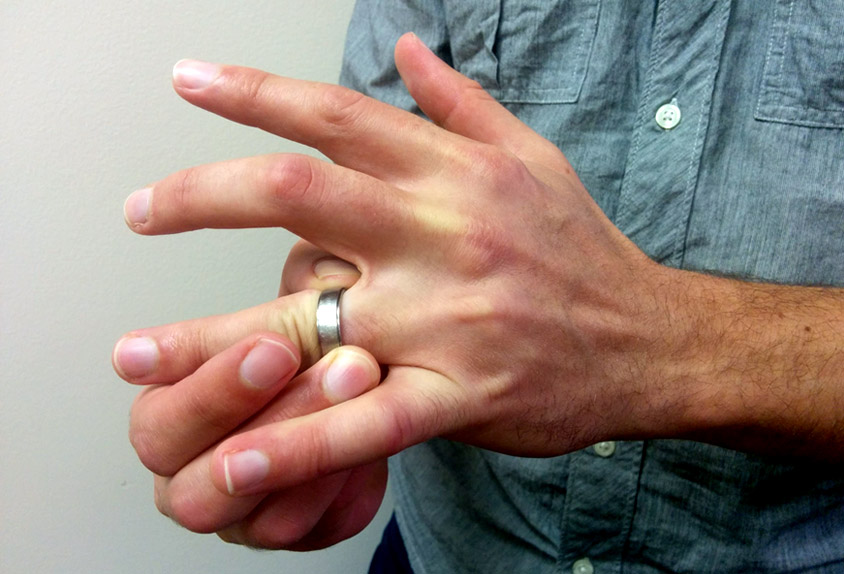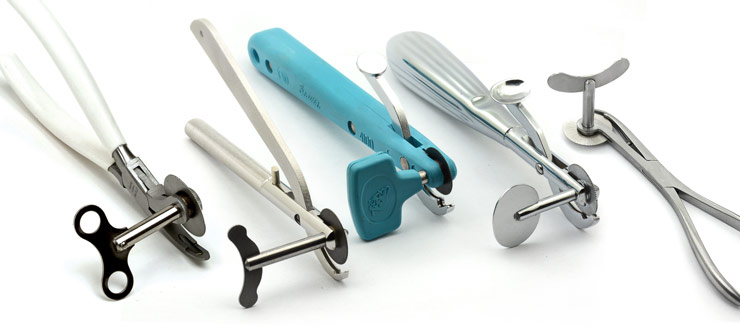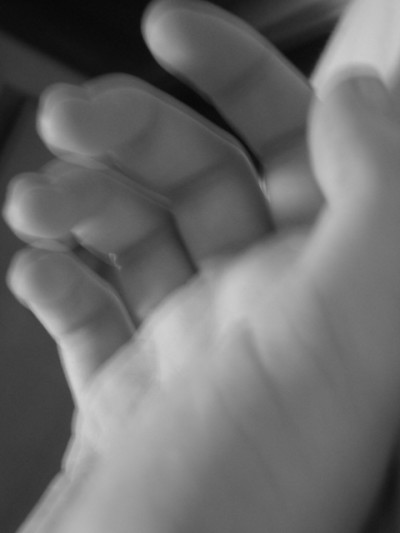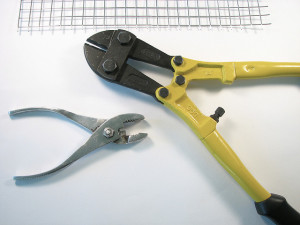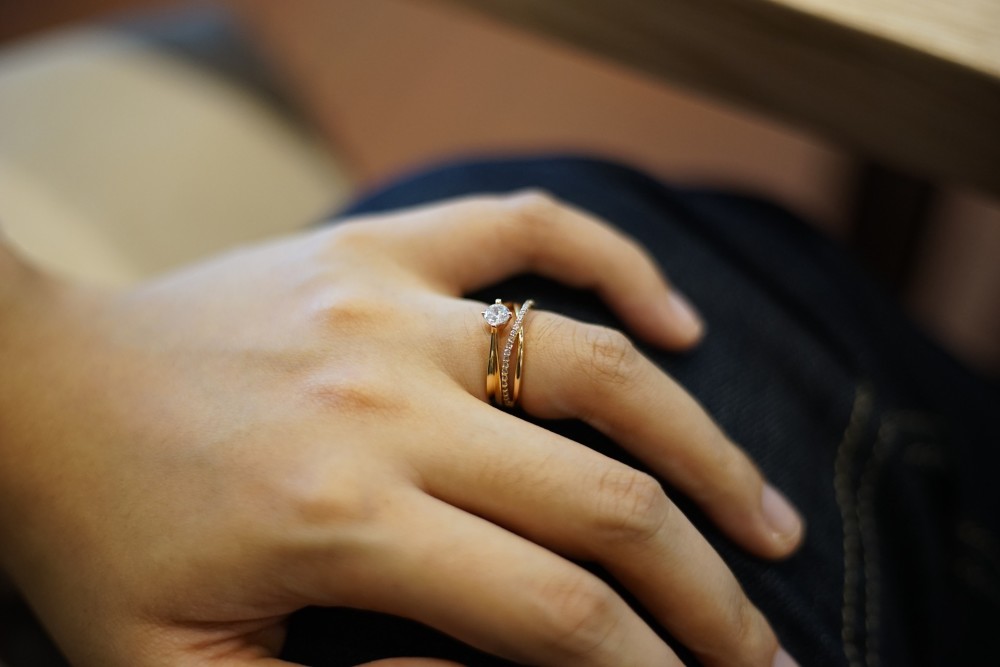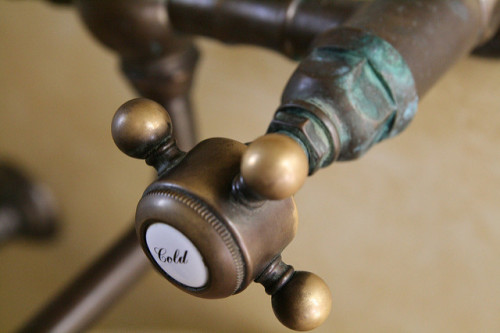If you’re reading this article, you probably have a ring stuck on your finger. Fortunately, there are many solutions which we cover below. You can try less drastic methods first, like a piece of string or lubricant. If these methods don’t work, you can always cut a ring off using a ring cutter.
In our easy-to-follow guide, we’ll help you find the best method for removing your ring. The first step you should take is identifying what type of ring is stuck on the finger. The second step is to try the non-destructive methods. If they don’t work or you’ve already tried them, then it’s time to cut the ring off.
Let’s get started!
I. Ring Cutters
III. How to cut Tungsten Carbide, Ceramic, Stone rings
IV. How to cut Gold, Silver, Platinum rings
V. At Home Solutions – For All Ring Types
Ring Cutters
Sometimes, after the at home solutions have been tried, the ring still does not come off. If there is severe trauma to the finger or to the hand, cutting the ring off is the best option. Though it may seem simple, it takes experience. So please, do not attempt to cut your ring off on your own.
RINGS SHOULD ONLY BE CUT OFF BY PROFESSIONALS IN THE MEDICAL AND JEWELRY MAKING FIELDS.
These tools can be extremely helpful when other remedies just won’t do. A lot of ring cutters are cheaply made and not durable. Our guide will help you decide on the best ring cutter to purchase. Always keep in mind that ring cutters should be handled with care.
For professionals, here is a list of things to look for when purchasing a ring cutter for your practice:
-
Overall Build
The cutter should be hand-held and smaller in stature, such as an air actuated rotary tool or a miniature hobby saw. Though the size of the cutter should be small, it doesn’t mean that it should lack in substance or power. The rotary tool should have the capacity to interchange blades. This is very important when it comes to cutting through different materials. For instance, cobalt needs a diamond plated separating disk while softer metals do not.
The cordless, battery powered option is preferable. In some instances, such as an EMS situation, there aren’t always power outlets at hand. Navigating a cord may increase stress levels. To reduce stress and make an easier removal, just go cordless.
Other tools, besides power tools, that can be used are: side cutting pliers and a jeweler’s saw. In all these cases, protection is applied to the individual to ensure comfort and safety during the removal. The protection can come in the form of a spoon, a strip of an old credit card or a piece of plastic. Eyewear should be worn at all times by the user of the ring cutter for protection.
-
Comfort of Use
A comfortable option is necessary for ease of maneuverability. You do not want a shaky hand while cutting the ring off, otherwise more than just a ring could be cut off. Practice is necessary to effectively remove a ring. The ring cutter should be practiced with often.
-
Ability to Sterilize
To prevent the spread of germs from one person to the next, the ring cutter should be sterilized before and after use. The blade, and any other component, should have the ability to be steamed in an autoclave, washed with a detergent or sterilized with an antiseptic like hydrogen peroxide. When purchasing a cutter, look to see if “ability to sterilize” is included in the description.
-
The Type and Quality of the Circular Blade
Different blade styles are available depending on what type of cutter is being used. Diamond disks are fairly common and effective. A circular carbide blade is another popular and dependable choice.
The “Emergency Ring Cutter” has been around for a while and works for soft metals like yellow gold. However, the blade dulls quickly and doesn’t cut through stronger metals like titanium or tungsten.
The blade should be durable and high quality. It should not break while in use. What you pay for is what you get. Read the reviews on the blade and determine whether or not the blade has been successful for others in the past. A cheap product often lives up to its cheap price.
Titanium
Titanium rings are strong, durable and lightweight. You can try to remove a Titanium ring with the above methods first. If none of those methods work, emergency services may be needed. A normal ring cutter won’t always work, especially if the ring is an aircraft grade rather than commercial pure grade.
Titanium ring removal techniques also work on cobalt rings.
-
Diamond Blade Ring Cutter
Despite a lot of scare tactics out there, titanium rings can be cut with the right equipment. With a diamond cutter and a power attachment, you can cut through a titanium ring in about 2-3 minutes. You can do it even without a diamond cutter, it just takes longer, about 10-15 minutes to cut through the ring.
Instructions for using a power cutter to remove a ring –
- Protect the finger that the ring is stuck on by placing the finger guard under the ring.
- Place the ring band in the notch on the finger guard*
- Power the cutting blade before making contact with the ring
- Gently apply pressure between the blade and the ring until you’ve made a cut
- Make a second cut on the opposite side of the ring
Note* – Continuously lubricate the rotating disc with water to keep the disc cool.
-
Bolt Cutter
Warning! Some sites suggest using a bolt cutter, but we don’t recommend it.
You cannot use a bolt cutter on titanium unless it’s under 5-6mm in width. Anything wider than that, and you risk injuring the person wearing the ring. A bolt cutter is brute force—you don’t know where it will go. You can try bolt cutters in an emergency, but we don’t recommend it.
If you do decide to use a bolt cutter, the ring should be cut on both sides for effective removal.
Tungsten Carbide, Ceramic, Stone
Tungsten carbide rings have impressive strength and density. Due to its strength, it’s hard to crush a tungsten ring. In an accident, your finger may be protected by the ring. With that said, a tungsten carbide ring can still become stuck on a finger. If the above methods have been tried and the ring has still not been removed an another method may be necessary.
Likewise, ceramic and stone rings can be equally tricky to remove. The ring cracking technique, as described below, can be used to remove natural stone bands like onyx or jade.
-
Ring Cracker
A ring cracker will crack tungsten, ceramic and stone rings while still on the finger. It cracks the ring without causing pain or additional injury to the individual’s finger. The pressure created causes the ring to break or shatter. Eye production should be worn while using the device. If a ring cracker isn’t something you have handy, locking pliers have also been used with the same effect.
Take a moment to view this demonstration of how to use a ring cracker:
Gold, Silver, Platinum
Gold and Silver are very soft metals, so a quality ring cutter with a regular steel blade will cut them. But for professional use, we recommend investing in a professional grade ring cutter as discussed above. Platinum is also a very soft metal, but unlike Gold and Silver, it is very dense. To cut a Platinum ring off we recommend a high quality, high-speed steel blade.
We do not recommend using the Diamond Blade Ring Cutter for Platinum, Gold, Silver or any other soft metal rings. The problem with the soft metals and the Diamond Blade Ring Cutter is that the diamond disc will fill with the soft metal and become dull and less effective overtime. Use a Hardened Tool Steel blade for soft metal rings to avoid spreading after the ring has been cut. If you want to make only one cut into the ring, you’ll need two sets of hands and two heavy duty paper clips to pull the ring apart , finally removing the ring.
-
Ring Cutter
If the ring can be taken off by no other methods, it should be cut off to prevent damage. Cutting the ring off is best if the ring has bumps or notches inside. The bumps prevent the ring from slipping off the finger. Trying to twist off a ring with these bumps can cause real damage to the finger.
At Home Solutions – For All Ring Types
Sometimes a ring can become stuck on your finger. It could be from swelling, a bee sting, pregnancy or even soaking in a hot bath. Even if you feel like you’ve tried everything, there’s bound to be something on our list that you haven’t considered yet.
Here are several methods that have worked for others in the past that may be of help:
-
Lubricant
Lubricants are a great way of removing a ring that’s stuck on a finger. They get the ring off in one piece with minimal damage to the skin. If your skin near the ring is broken or cut, choose your lubricant wisely. Some may sting the skin, causing further irritation.
Hand lotion, Vaseline, butter, peanut butter, shortening, antibiotic ointment, soap with water, hair conditioner or shampoo, Windex and baby oil are all great options. If the skin is damaged, be careful when using Windex as certain formulas may harm the skin. Read the bottle first to make sure it is skin safe. Professional jewelers often use the Windex method with great success. If the skin is broken, antibiotic ointment is the best choice.
For more information, check out How to Remove a Stuck Ring
-
String
String is the best method for a ring stuck on a swollen finger. The string wraps around the swollen area of the finger, temporarily, to reduce size. This allows the ring to slide off of the finger easily.
To start, slip the thread, string or dental floss under the stuck ring. A needle may be necessary to get the string through the ring. It may be easier to gain access palm up. Make sure the bulk of the string is toward the fingertip, as this will be needed for wrapping.
Starting at the top of the ring, wrap the string around the finger toward the fingertip. Do this until you have reached over the knuckle. Pulling on the shorter end that was under the ring, begin to gently unwind the string. The string should slide over the knuckle and pull the ring upward, eventually releasing the ring. For the best results, relax and slightly bend your finger at the knuckle throughout.
An oxygen mask strap can be used in place of the string, as an effective alternative. The strap has enough stretch to wrap, while also being thin enough to get under the stuck ring. Umbilical tapes from the operating room can also be used. Some come with a foil tab, which can be easily threaded between the ring and the finger. Simply wrap the compress, add some lubricant and gently pull!
For more information, check out How to Remove a Stuck Ring Safely
-
Elevation
Try lifting the ring above shoulder level for a few minutes. Using the laws of physics and gravity, this method allows the fluids in your finger to reduce as gravity pulls them downward. This method has been known to work well when a lubricant is also applied.
-
Rubber Band
The use of a rubber band along with a soapy solution can be very effective. It is the favored method of medical professionals, like firemen.
To start, push a cut rubber band through the ring. Apply a soapy solution to all sides of the finger. Holding the ends of the rubber band, use an up and down motion while moving the band from side to side. Concentrate on moving the ring upward, toward the end of the finger.
-
Cold Water
A swollen finger can also be reduced with cold temperatures. Grab a bowl that is large enough for your hand and fill it with cold water. Refrigerator the water if necessary. Then place your hand in the cold, but not icy, water and leave it for a few minutes. Gently pull on the ring to remove.
